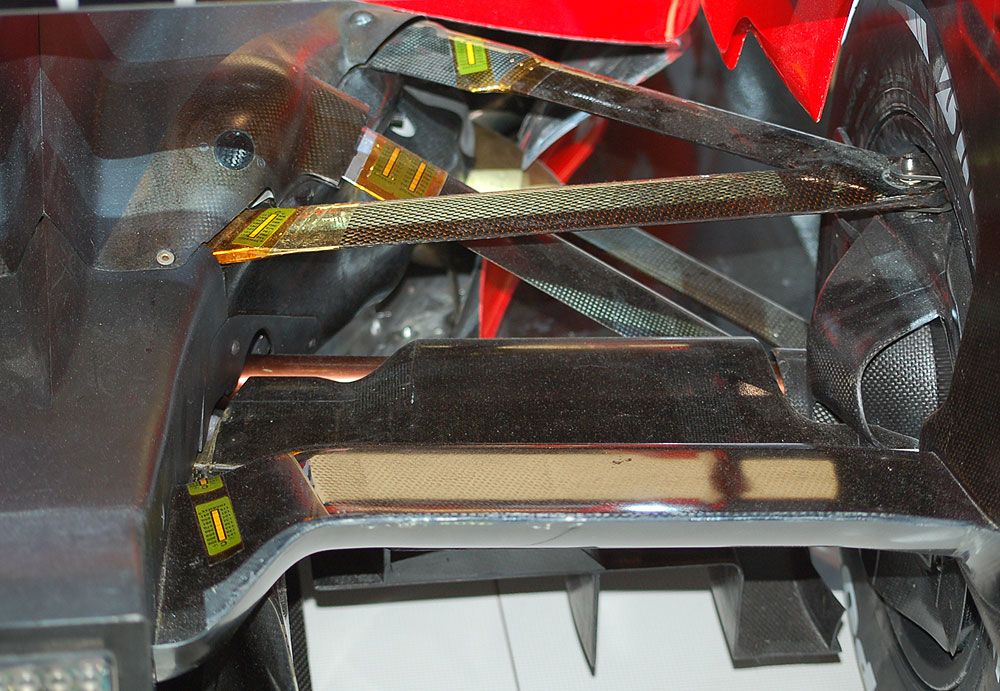ginsu wrote:
Yes, this may be true when the airflow is coming straight onto the car, but when it's in a corner the airflow is coming at an angle, and the wheel shields would surely help reduce drag in this type of situation. Sure, we don't have a wind tunnel to test it, but it seems logical to me. I think, overall, there is going to be less drag with the shields.
How many corners in F1 have aero drag as limiting factor of cornering speed ?
mini696 wrote:
Reca wrote:
What I find puzzling is that many people scream “murder” seeing the fairings on the rear wheels but you hear very few complains about these winglets, I guess it must be because they aren’t as visible. Personally I find them way more questionable, although obviously they are absolutely legal for the very same reason the fairings are.
Well the winglets are within the box allowed for brake ducts so the teams know they cant complain about them.
Before the clarification about the devices allowed inside the 'box' Ferrari (amongst others) used to make these winglets with a tiny hole in them to circumvent (sic) the rules. They had a hole, ergo, they are a brake duct. The FIA changed the rules to stop teams complaining, and to make scrutinizing (sic) them easier.
I know, my point was about the people on the various F1 forums on the web. There are hundreds of messages about the fairings with people discussing them being “movable aero devices” and against the “spirit of the rule” but if that was the point (and as repeated several time it’s not), then the winglets would be lot more questionable. Yet nobody cares about them. I consider it somehow funny.
Sometimes I wonder what would happen if Ferrari guys added on top of the sidepods a carbon bulge, absolutely empty inside, painted in fluorescent pink and with the writing “mass damper fairing”. I suspect internet wouldn’t survive.
Next time I’ll met a Ferrari engineer I’m going to suggest it...
manchild wrote:
I think that system works like this - cold air enters the intake duct, goes trough the disc, exits, fills the rim, warms up the tyres via rim and than exits next to the rear wing endplate. Wheel/duct fairing itself has dual purpose - to hold hot air a bit until it warms up the rim and tyres and to improove aerodynamic efficiency killin' two flies with one illegal stroke.
Tyres you have troubles to warm up are usually the front ones, at the rear if anything the problem would be the opposite.
Ferrari brake duct at the front is completely wrapped around the disc and the hot air never makes direct contact with the rim, while at the rear it does. That’s the opposite of what one would expect if the hot air from brakes had the positive influence on tyre temp you suggest.
Besides, once the air fills the volume between the rim spokes and the element of the brake duct attached to the wheel (that I will never call fairing again because some people would take a word used exclusively for brevity and make of it the definite proof that it has to be merely an aerodynamic device...), there’s really no way it could go back and exit from the outlet on the inside of the wheel, not even if the outer side of the wheel was completely closed (it wouldn’t simply get there in that case). If hot air from disc arrives in that space, it will surely go out thru the central hole. The part of air exhausted from the outlet on the inside of the wheel, that I believe includes all the carbon dust generated by pads and disc wear, never passes thru the wheel spokes.










